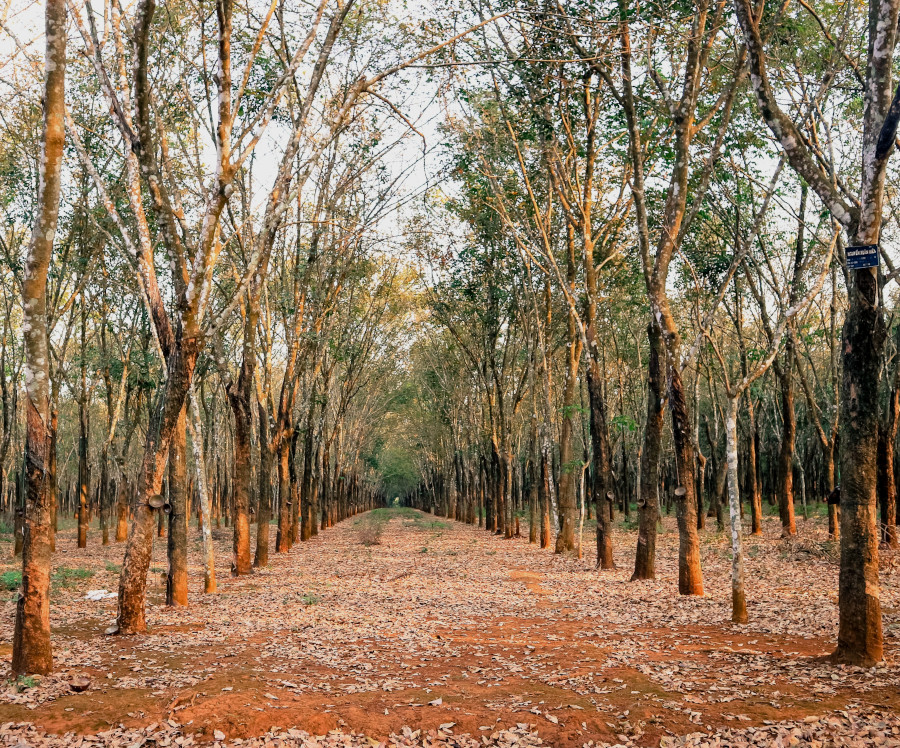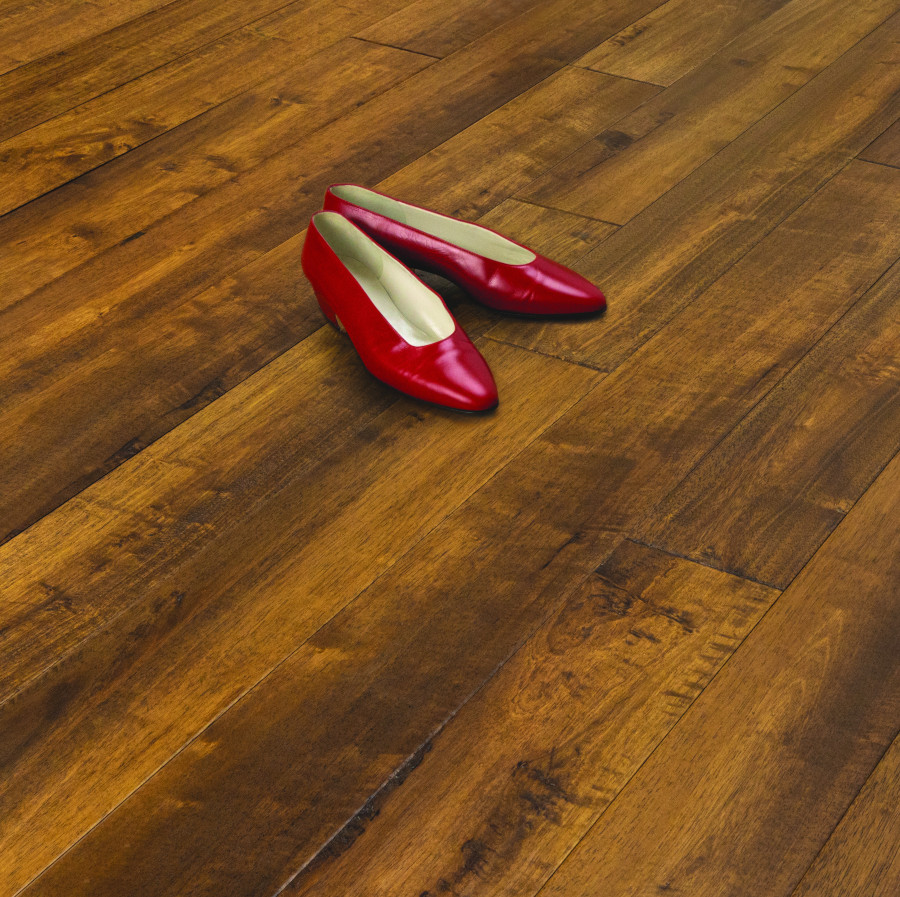What is Seringa Wood?
Seringa (se·rin·ga | \ sə̇ˈriŋgə \) is any of several plants of the genus Hevea. Seringa goes by several names: Hevea, Rubberwood, Plantation Hardwood and Para Rubbertree. The seringa is grown on plantations and its sap is used to produce latex. Seringa, the hardwood, is a byproduct of the latex production. When these trees reach approximately twenty-five to thirty years old, their production of sap decreases, and they are replaced. Historically they were cut, gathered, and burned when they stopped producing sap.

Photo by Anh Vy at Unsplash
Today, WoodHouse and other wood product companies, use seringa to produce flooring and furniture. Seringa offers high dimensional stability, especially in difficult climates like Colorado and other arid regions. This makes it less susceptible to damage amidst changing environmental conditions, resulting in a long-lasting floor. With a Janka hardness of approximately 980, it is about as hard as teak (1000) or North American cherry (950). Seringa is a beautiful wood. The interesting grain pattern, rich warm color, and willingness to take stains and finishes makes seringa a favorite with furniture and flooring makers.

WoodHouse seringa flooring
What Makes Seringa a Strong Ecologically Green Choice?
Most everyone knows that trees take CO2, a greenhouse gas, out of the atmosphere. This action is known as carbon sequestration. It’s what happens next that is perhaps even more important.
Once a tree is mature, it slowly becomes less efficient at sequestering CO2. In the case of seringa, it also produces less latex. From that point in time, a tree’s life can go in several directions. Let’s look at them.
Death by disease. If left to continue growing older, at some point a tree will die of disease. When this happens, the decaying tree releases a portion of the carbon it sequestered back into the atmosphere as CO2. The rest is returned to the ground and eventually becomes elemental carbon (coal), a fossil fuel.
Death by fire. Trees that don’t die by disease also face death by fire. Every year, 28 million hectares of trees are destroyed by fire. This process releases millions of tons of CO2 per year back into the atmosphere. What took a tree decades or even centuries of carbon sequestration is completely reversed in less than an hour.

Photo by Malachi Brooks on Unsplash
Harvesting. When a tree, like seringa, is harvested for products like flooring and furniture, the carbon sequestered in the wood stays there. For as long as the product remains in use, the carbon within the wood stays out of the atmosphere. As mentioned before, old trees are not as efficient at sequestering carbon as young ones, so forest management plays a critical part in the responsible use of the earth’s resources.
Seringa Flooring from WoodHouse
WoodHouse is proud to offer wood flooring to the ecologically minded consumer. We are especially proud to offer seringa flooring. WoodHouse offers seringa flooring in its Iberian Plank (Solid) collection.
